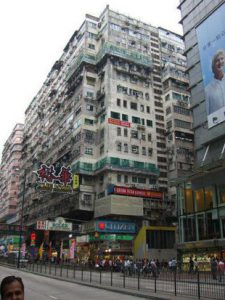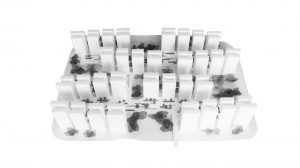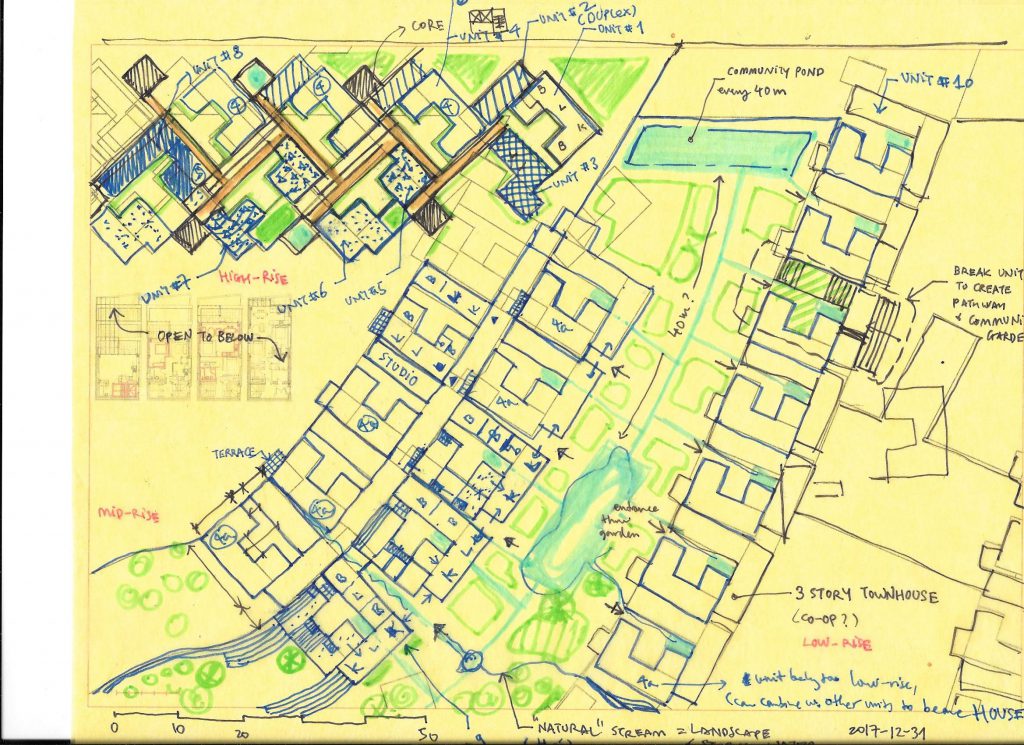Social Housing - Towards Inclusive, Multi-Dimensional and Sustainable Architecture
Events
02/11/20 – 05/31/20
Social Housing – Towards Inclusive, Multi-Dimensional and Sustainable Architecture
10th Eastern Himalayan NaturenomicsTM Forum in Bangladesh
Quy hoạch và Phát triển Đô thị Bền vững – Kinh nghiệm từ Hoa Kỳ – 10/2022
HAU Bangkok workshop – 10/2022
World Bamboo Workshop 2022
Ad hoc housing Architecture workshop – 08/2022
HUCE KU Leuven – 08/2022
Chuyển đổi Di sản công nghiệp thành không gian sáng tạo-12/2020
Vietnam Green Building Week-12/2020
Between Two Centuries – 11-2020
Xem Dem Cang Dem – 08-2020
This conference on Social Housing was organized by the Academy of Managers for construction and cities (AMC) in 4/22/2023. The three main presenters are Arch.PhD.Dr Nguyen Vu Phuong, Architect Manuel Der Hagopian (G8A Architects) , and Dr. Nguyen Quang (Former Director of UN-Habitat Vietnam).
Hội thảo về Nhà ở xã hội lần này do Học viện Cán bộ quản lý xây dựng và đô thị (AMC) tổ chức vào ngày 22/4/2023. Ba diễn giả chính là KTS.TS Nguyễn Vũ Phương, KTS Manuel Der Hagopian (G8A Architects) và TS. Nguyễn Quang (Nguyên Giám đốc UN-Habitat Việt Nam).
Timeline

Policy shift The concept of Social Housing first appeared: 2005 (social housing for rent only). In 2013, expanding social housing for sale, lease and lease-purchase. From 2005-2013, the development of social housing for rent was very little (only a few projects in Sai Dong, Da Nang (converted 10,000 apartments to social housing)…).
We have Resolution 06 of the Executive Committee on urban development in Vietnam.
Target to invest 1 million apartments in social housing, NOCN by 2030.
According to the Law on Housing 2014, we have 10 subjects, of which there are 2 main groups: rural houses (support for families to build themselves), and social houses invested in the form of projects in urban areas.
The recent draft additional housing law has one more object as the investor for worker housing in industrial parks.
Land allocation form. Investors of social housing projects are exempted from land use fees. 3 laws do not agree. Amended Law Project: bidding, investment etc.
QC09: must have a detailed planning 1/500 to be able to bid to select the investor, not in accordance with the Law on Bidding.
There are separate policies for housing for workers in industrial zones and housing for the armed forces.
New support package of VND 120 trillion, chaired by the State Bank (directing 4 banks). The National Assembly approved it on April 19 and will “push the button” in October 2023.
Architect Manuel Der Hagopian presented his perspective on Housing architecture in Singapoer, Switzerland and Vietnam. Singapore, in his opinion, is a “tropical Switzerland,” lying somewhere between the “Swiss sense of propriety” and the complexities and contradictions found in Vietnam. The most important aspect to start working for housing architecture (or architecture in general), for the architect, is to understand localities, especially to understand a locality from its originality, in order to reach to a more gloabl understanding. Singapore is a case study in point, in which architecture is strongly supported by the First Prime Minister Lee Kuan Yew’s housing policy, in which he emphaszed not just architecture, but rather “People and Architecture.” Singaporian vision for this cohesian is clearly a pride of the nation as Public Housing images are shown in its dollar bills. G8A Architects has produced some competition and projects in Singapore such as the Punggol Puclic Housing and thee Green Ridges, where precast concrete account for about 80% of the construction system, and where landscape and architecture are synthetically entwined together. The Green Ridges project, for example, features ecological elements such as “green canyon,” “environmental desk,” and “neighborhood park” within the residential blocks.
If the Singaporian model is an effective “top-down” model, Switzerland model attests for a efficient and inclusive bottom-up model, which Mr. de Hagopian names “a collective effort.” In this model, physical, eonomical and psychological gaps are getting closer by means of policy and architectural setting.
For Vietnam, he stresses on the tearm “Affordable Housing” above other terms such as Public or Social Housing, since it’s most important for people to afford a place to live above all else. He stated that probably in the future, Vietnam will come back to the model of National Housing Program of the period 1954-1986. The research between his firm and the University of Architecture of Ho Chi Minh city reavled sites’ specificities and potentiality for finding identity of various lands, in contrast to the “generic answer” for housing commodities that we often see nowadays in the country. Thus, for Vietnam, affordable housing is, in his regard, included in “a quest for Identity.”
In the Q&A session, Arch.Dr. Nguyen Tien Thuan
Social housing seems to be the campaign, policy agencies and all ministries have to take care of. The State’s task is the main and should go before the participation of science, technology and enterprises
—
Chuyển hướng chính sách Khái niệm Nhà ở xã hội lần đầu tiên xuất hiện: 2005 (chỉ nhà ở xã hội cho thuê). Năm 2013, mở rộng diện bán, cho thuê, cho thuê mua nhà ở xã hội. Giai đoạn 2005-2013, NƠXH cho thuê phát triển rất ít (chỉ có một số dự án ở Sài Đồng, Đà Nẵng (chuyển 10.000 căn hộ sang NƠXH)…).
Chúng ta có Nghị quyết 06 của BCH về phát triển đô thị Việt Nam.
Mục tiêu đến năm 2030 đầu tư 1 triệu căn hộ NOXH, NOCN.
Theo Luật Nhà ở 2014, chúng ta có 10 đối tượng, trong đó có 2 nhóm chính là nhà ở nông thôn (hỗ trợ gia đình tự xây dựng), nhà ở xã hội đầu tư theo hình thức dự án tại đô thị.
Dự thảo luật nhà ở bổ sung mới đây có thêm một đối tượng là chủ đầu tư khu nhà ở công nhân trong khu công nghiệp.
hình thức giao đất. Chủ đầu tư dự án nhà ở xã hội được miễn tiền sử dụng đất. 3 luật không thống nhất. Dự án Luật sửa đổi: đấu thầu, đầu tư v.v.
QC09: phải có quy hoạch chi tiết 1/500 mới được đấu thầu lựa chọn nhà đầu tư, không đúng quy định của Luật Đấu thầu.
Có chính sách riêng về nhà ở cho công nhân khu công nghiệp và nhà ở cho lực lượng vũ trang.
Gói hỗ trợ mới 120 nghìn tỷ đồng do NHNN chủ trì (chỉ đạo 4 ngân hàng) Quốc hội đã thông qua ngày 19/4 và sẽ “ấn nút” vào tháng 10/2023.
Kiến trúc sư Manuel Der Hagopian trình bày góc nhìn về Kiến trúc nhà ở tại Singapoer, Thụy Sĩ và Việt Nam. Singapore, theo ý kiến của ông, là một “Thụy Sĩ nhiệt đới”, nằm ở đâu đó giữa “ý thức đúng đắn của người Thụy Sĩ” và những phức tạp và mâu thuẫn được tìm thấy ở Việt Nam. Khía cạnh quan trọng nhất để bắt tay vào làm kiến trúc nhà ở (hay kiến trúc nói chung), đối với KTS, là hiểu địa phương, đặc biệt là hiểu địa phương từ gốc rễ của nó, để đạt đến sự hiểu biết toàn cầu hơn. Singapore là một ví dụ điển hình, trong đó kiến trúc được hỗ trợ mạnh mẽ bởi chính sách nhà ở của Thủ tướng thứ nhất Lý Quang Diệu, trong đó ông nhấn mạnh không chỉ kiến trúc, mà còn là “Con người và Kiến trúc”. Tầm nhìn của Singapore đối với sự gắn kết này rõ ràng là một niềm tự hào của quốc gia khi hình ảnh Nhà ở Công cộng được thể hiện trên các tờ đô la của họ. G8A Architects đã tạo ra một số cuộc thi và dự án ở Singapore như Punggol Puclic Housing và thee Green Ridges, nơi mà bê tông đúc sẵn chiếm khoảng 80% hệ thống xây dựng, và là nơi mà cảnh quan và kiến trúc được kết hợp với nhau một cách tổng hợp. Ví dụ, dự án Green Ridges có các yếu tố sinh thái như “hẻm núi xanh”, “bàn môi trường” và “công viên khu phố” trong các khu dân cư.
Nếu mô hình Singapore là mô hình “từ trên xuống” hiệu quả, thì mô hình của Thụy Sĩ chứng minh cho mô hình từ dưới lên hiệu quả và toàn diện, mà ông de Hagopian gọi là “nỗ lực tập thể”. Trong mô hình này, các khoảng cách về vật chất, kinh tế và tâm lý ngày càng gần hơn thông qua chính sách và bối cảnh kiến trúc.
Đối với Việt Nam, ông nhấn mạnh đến khái niệm “Nhà ở vừa túi tiền” hơn các thuật ngữ khác như Nhà ở công hoặc Nhà ở xã hội, vì điều quan trọng nhất đối với người dân là mua được một nơi ở trên hết. Ông nhận định có thể trong tương lai Việt Nam sẽ quay trở lại mô hình Chương trình Nhà ở Quốc gia giai đoạn 1954-1986. Nghiên cứu giữa công ty của ông và Đại học Kiến trúc TP.HCM đã hé mở những đặc thù về địa điểm và khả năng tìm kiếm bản sắc của các vùng đất khác nhau, trái ngược với “câu trả lời chung chung” cho hàng hóa nhà ở mà chúng ta thường thấy hiện nay trên cả nước. Do đó, đối với Việt Nam, nhà ở giá rẻ, theo quan điểm của ông, được đưa vào “cuộc tìm kiếm bản sắc”.
Trong phần hỏi đáp, KS.TS. nguyễn tiến thuận
Nhà ở xã hội dường như là cuộc vận động, cơ quan chính sách và bộ ngành nào cũng phải lo. Nhiệm vụ của Nhà nước là chính, phải đi trước sự tham gia của khoa học, công nghệ và doanh nghiệp
—-
References:
Punggol Waterway Terraces by G8A Architects
https://www.archdaily.com/787479/punggol-waterway-terraces-group8asia
Green Ridges by G8A Architects
https://g8a-architects.com/project/green-ridges/
How Singapore Fixed Its Affordable Housing Problem
https://www.bloomberg.com/news/articles/2015-03-23/the-housing-legacy-of-singapore-s-first-prime-minister-lee-kuan-yew-who-passed-away-last-sunday-at-the-age-of-91




